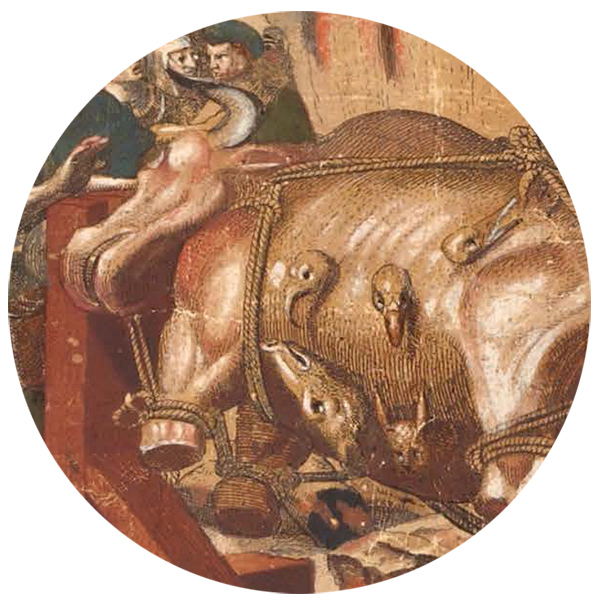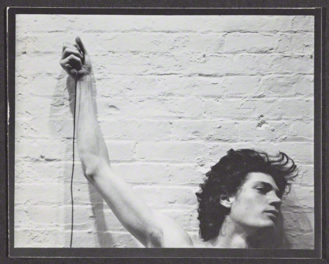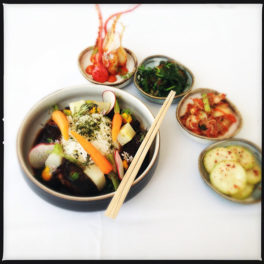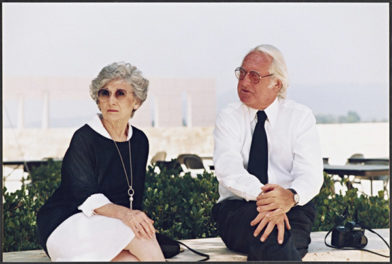
Feast with stuffed ox (detail), 1530, in Nicholas Hogenber, Procession of Pope Clement VII and the Emperor Charles V after the coronation at Bologna on the 24th February, MDXXX. Hand-colored etching pasted on canvas scroll. The Getty Research Institute
What’s your favorite holiday stuffing? Not only do holiday eaters engage in more than a bit of gluttony, but often the food itself is stuffed. In sixteenth-century Italy, a street feast to celebrate the coronation of Charles V featured the most over-the-top stuffing of them all: the original turducken.
 The year is 1530. Coronation ceremonies are being held for the Holy Roman Emperor in Bologna, Italy. A daylong procession in the streets culminates in a feast sponsored by the city senate. Red and white wine flows from the mouths of gilt lions mounted on columns adorned with the Roman imperial double-headed eagle and the emperor’s motto, “plus ultra” (further beyond), referring to his power and the extent of his realm.
The year is 1530. Coronation ceremonies are being held for the Holy Roman Emperor in Bologna, Italy. A daylong procession in the streets culminates in a feast sponsored by the city senate. Red and white wine flows from the mouths of gilt lions mounted on columns adorned with the Roman imperial double-headed eagle and the emperor’s motto, “plus ultra” (further beyond), referring to his power and the extent of his realm.
While the imperial party dines indoors, baskets of bread are thrown to the common people eating and drinking in the streets.
To celebrate the occasion, an enormous roasted ox is stuffed with fowl, suckling pigs, lambs, and hares and roasted in a public square. Look closely and you’ll see the small animal heads and beaks protruding from its sides. Packing roast within roast in this way was the ultimate symbol of wealth, abundance, and delicious feasting.

And this oxducken was not history’s last. Marcia Reed, curator of the exhibition The Edible Monument, pointed me to yet another proto-ducken from the 1600s. This fantastically giant ox, per the inscription on the print below, was roasted in Rome to celebrate the birth of James II’s son and heir. In the foreground, elegant onlookers rejoice; in the background, commoners look on with haunted and hungry eyes, awaiting their share.

Bue arrostito intiero in pubblica piazza in occasione dell’allegrezze celebrate in Roma per la nascita di Giacomo primogenito di Giacomo II re della Gran Bretagna, 1688, Arnold van Westerhout. Engraving, 32.5 x 43.8 cm. Private collection, Milan. Reproduced in Il mito del paese di Cuccagna. Immagini a stampa dalla Raccolta Bertarelli (Pisa: Edizioni ETS, 2015), p. 122.
Anyone for Tofurky?




Comments on this post are now closed.